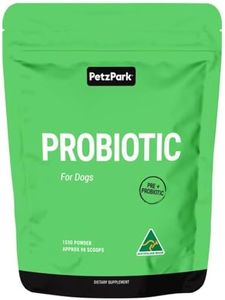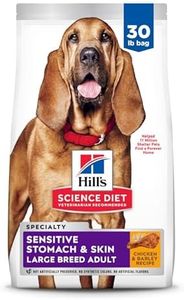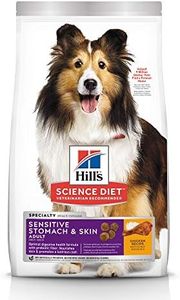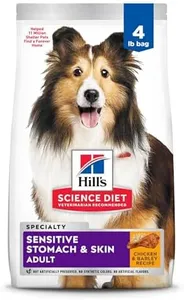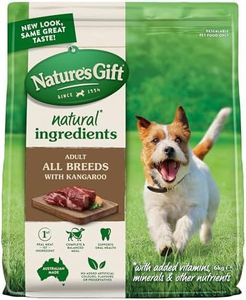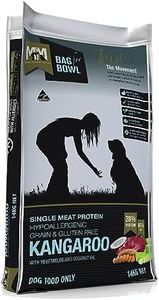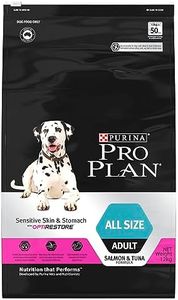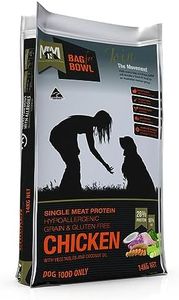We Use CookiesWe use cookies to enhance the security, performance,
functionality and for analytical and promotional activities. By continuing to browse this site you
are agreeing to our privacy policy
10 Best Dog Food For Skin Allergies
From leading brands and best sellers available on the web.Buying Guide for the Best Dog Food For Skin Allergies
Choosing the right dog food for skin allergies can make a big difference in your pet’s wellbeing. Skin allergies in dogs often show up as itching, redness, hot spots, or flaky skin, and the right food can help manage these symptoms. The process involves looking for formulas designed to support skin health, reduce allergy triggers, and provide balanced nutrition. Before changing your dog’s food, it’s always a good idea to consult with your veterinarian to confirm food allergies, as other health problems can have similar symptoms.Limited Ingredient DietA limited ingredient diet (LID) means the food is made with fewer components, often focusing on a single source of protein and carbohydrate. This is important because it reduces the number of potential allergens your dog is exposed to, making it easier to identify and avoid triggers that cause skin issues. When navigating options, check for foods emphasizing one main protein and one main carbohydrate. Choose this if your dog reacts negatively to complex ingredient lists or if you and your vet are trying to pinpoint specific intolerances.
Novel Protein SourceNovel proteins are animal proteins your dog has not commonly eaten before, such as duck, venison, rabbit, or fish, instead of typical chicken or beef. This matters because dogs often develop allergies to proteins they eat frequently. When picking, look for protein sources that are uncommon in your dog's usual diet. If your dog’s allergies persist after trying more familiar proteins, selecting a food with a novel protein could help manage allergic reactions.
Grain-Free vs. Whole GrainSome dogs are sensitive to certain grains, which can contribute to allergic reactions. Grain-free foods eliminate ingredients like wheat, corn, and barley, replacing them with alternatives like sweet potatoes or legumes. However, many dogs tolerate grains well, and whole grains can even offer beneficial nutrients. To decide, observe whether your dog’s symptoms improve when switching to a grain-free option, or consult your vet for guidance based on common triggers for your breed or pet.
Omega Fatty AcidsOmega-3 and omega-6 fatty acids, often from fish oil or flaxseed, support skin health and can help reduce inflammation and itching caused by allergies. Foods fortified with higher levels of these nutrients are particularly helpful for sensitive skin. When comparing foods, check the ingredient list or nutritional information for sources of omega fatty acids. Choose a food with added omegas if your dog’s skin is dry, flaky, or frequently irritated.
Hypoallergenic FormulationsHypoallergenic dog foods are specially formulated to lower the risk of allergic reactions, sometimes using hydrolyzed proteins (broken down into very small pieces so the body doesn’t recognize them as allergens). This choice is important for dogs with a history of severe allergies or those not responding to standard limited ingredient foods. Look for hypoallergenic labels, and select this type if your vet recommends a highly controlled diet due to persistent or serious skin allergy symptoms.
Preservatives and AdditivesArtificial preservatives, colors, and flavors can sometimes trigger or worsen skin allergies in sensitive dogs. Choosing foods that avoid unnecessary additives can help reduce the likelihood of reactions. When reading labels, pick foods with natural preservatives (like vitamin E or vitamin C) and minimal extra dyes or artificial flavors. This is especially relevant if your dog’s allergies are not linked to protein or grains, or if you want a generally cleaner diet to support health.
